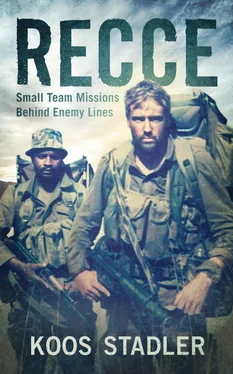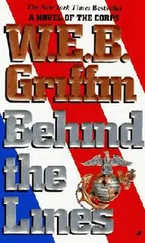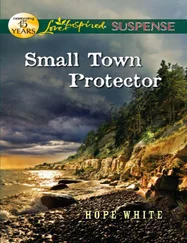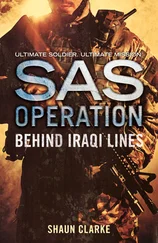Then someone shouted, “Antonov!”, the usual warning for the missile operators to get into action. Most of the guys were gathered at Diedies’ trench. We looked up. The sky was clear, with not a cloud in sight. An AN-12 was heading straight towards us.
“This is it, manne !” Diedies shouted and ran to place himself between the two missile vehicles.
I fixed my binoculars on the approaching aircraft. The wings had to fit into 18 mm on the instrument’s reticule to be within striking range of the SAM-9s. As I started shouting, someone else also called out: “It’s within range!”
“Get it!” Diedies ordered the gunner.
The missile left the launcher in a cloud of smoke and dust, blasting most of the camouflage off the vehicle. Our eyes were fixed on the smoke trail of the missile, which seemed to bear way off track and then appeared to explode far behind the aircraft.
“It’s a hit!” the gunner shouted as he climbed out of his vehicle. “It’s a hit!”
“Okay,” Diedies ordered, “Get this vehicle camo’d up again and move to your positions. We’ll wait and see if there’s any reaction.”
All the while I tracked the aircraft through my binoculars. Suddenly it started to veer off course and a thin trail of smoke appeared.
“It’s hit!” the rest of us shouted simultaneously. “It’s going down!”
After ten or fifteen minutes the plane disappeared behind the tree line, having circled in a wide loop to the north. It was obviously in trouble. Then, as we watched in silence, a massive cloud of smoke appeared above the trees. The aircraft had crashed.
We kept a low profile for the rest of that very long day, waiting and watching as the MiG-23s did their meticulous searches. As soon as it was dark we packed and got the vehicles ready. We could not afford to stay in the same position any longer. That night we drove 20 km south and found a suitable spot, on the edge of a flood plain, where we redeployed the missiles. By first light the SAM-9s were ready and camouflaged and everyone was dug in.
Over the following days, while waiting for another target to present itself, I contemplated our success. I felt sorry for whoever had died in the crash. Killing an enemy in a fair fight was one thing. But this was different. The crew and passengers of the aircraft had no chance. In fact, we did not even know who’d been on board. I discussed these thoughts with Diedies and found some consolation in his reaction.
“I don’t even think of the people killed,” he said. “I just look at the bigger picture. There was a reason why we got this job. The task was executed successfully and the goal was obtained. That’s it. Get on with your life.”
Diedies was always the pragmatic one. By this time I had gotten to know him as a very sympathetic person, and I realised that he probably felt the same measure of guilt as I did. This reassured me and helped me to work through my own feelings.
A week later we exfiltrated along the same route we drove in on. Aside from the occasional MiG flying at high altitude, no more aircraft bothered us. After a full two-month deployment we finally reached the border. It was the longest I had been without a wash, and I desperately needed one. But my sense of accomplishment was great, not so much for the successful operation but because at last I felt I had settled in with the Small Teams group.
Diedies and I also formed a lifelong bond, and for years to come we would work closely together. Every single day of those two months he had me drafting and sending intelligence reports covering movement of ground forces as reported by UNITA, as well as the details of aircraft passing overhead. Little did we know at the time that these reports would greatly assist the intelligence community in compiling an accurate picture of the build-up of enemy forces at Menongue and Cuito Cuanavale.
It transpired that the Antonov had been carrying a Russian crew and eleven senior Russian advisors. Radio intercepts indicated that the Russian officers had been directing operations against UNITA on the Eastern Front and were heading back from Menongue to Lubango for a break. This was a serious setback for the Angolan-Soviet-Cuban war effort. To us it was clear proof of Soviet involvement in a war that, in our view, had nothing to do with them.
3
Operation Killarney
December 1985 to January 1986
“The first principle of the art of stalking is that warriors choose their battleground. A warrior never goes into battle without knowing what the surroundings are.”
– Carlos Castaneda,
The Wheel of Time
BY THE MID-1980s the civil war in Angola was at its height. The MPLA focused its efforts on Jonas Savimbi’s UNITA in the eastern part of the country, while South Africa supported UNITA with rations, equipment, ammunition and vehicles. Behind the scenes, the Americans directed substantial financial aid to UNITA because they were still concerned about the communist threat, especially in light of Russian and Cuban support for the MPLA.
The supply lines in support of the MPLA offensive against Savimbi relied on the delivery of huge amounts of stores and equipment to the ports of Namibe and Lobito. In the case of Namibe this material would then be transported by train into the interior to Lubango. From Lubango, Russian cargo planes ferried supplies to the forward airfield at Menongue.
Operation Killarney

The Namibe–Lubango railway line carried a substantial part of the logistics for both the Angolan forces and their SWAPO brethren, which of course made it a priority target for the SADF. The Recces had indeed launched a number of operations to render the logistics ineffective, one of which was an attempt to demolish the rail tunnel at Humbia, another to destroy the road over the Serra de Leba pass in October 1979. There were also several unsuccessful attempts to destroy the road bridge at Xangongo.
Diedies had previously convinced the bosses that two-man teams could disrupt rail traffic for substantial periods at low cost and with minimal risk. Over the course of two years two Small Teams – Diedies and Neves, and Tim Callow and Paul “Americo” Dobe – had repeatedly deployed in southwestern Angola, laying mines along the exposed railway line and bringing traffic to a virtual standstill.
During the same period EMLC conducted wide-ranging research on various types of explosive charges and methods of detonation that could effectively derail a train, destroy the engine and cause enough damage to the track so it could not be repaired easily. However, there were certain challenges that had to be considered. The Angolan forces patrolled the line on a daily basis, checking for disturbances on the track. Intelligence confirmed that an empty carriage was also placed in front of the engines to detonate any charge before the engines could set it off. All trains carried armed escorts, while culverts and curves in the line were especially well monitored as they were considered vulnerable or potential targets.
By the end of November 1985, barely a week after our return from the previous deployment, we were back in the ops room at Phalaborwa to be briefed for the next mission. Present were Dave Scales, Neves Matias, José da Costa, CC Victorino (“Vic”), me and some intelligence support guys. Operation Killarney was aimed at causing maximum damage to the railway line. EMLC’s latest invention also had to be tested.
Our ops briefings always started with the counterintelligence brief, followed by an intelligence overview, after which the ops commander would convey the mission. Eric McNelly, taking personal responsibility for Small Team deployments, was again there for the counterintelligence brief. He explained the details of the security risks we would be facing once we were at Ondangwa, since SWAPO ran a comprehensive spy network in Ovamboland and any new activities in and around Fort Rev would be reported.
Читать дальше













